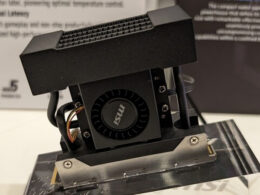Texas Instruments’ Quarterly Forecast Disappoints Investors with Weak Chip Demand
Texas Instruments, one of the oldest semiconductor component suppliers, disappointed investors not with the results of the past quarter, but with the forecast for the current one. The company predicts weaker than expected demand for chips in the automotive and industrial segments. The projected revenue for the current quarter was lower than market expectations.
For this quarter, Texas Instruments expects revenue between $3.45 billion and $3.75 billion, lower than the prior market consensus of $4.09 billion. The estimated earnings per share stand at $0.96 to $1.16, also lower than the investor’s expected $1.42 per share. These forecasts suggest a delay in the recovery of demand in key semiconductor component market segments. The wide-ranging industrial products of Texas Instruments allow for an accurate market situation assessment based on their forecasts.
According to Texas Instruments CEO Haviv Ilan, the previous quarter experienced increasing weakness in the industrial segment and steady decline in automotive. Currently, the demand for electric cars is not meeting expectations, a sentiment echoed by many car manufacturers. Following the earnings announcement, Texas Instruments saw a 4.5% drop in share price during post-market trading.
Previous Quarter Performance
The company’s revenues fell by 13% year-on-year to $4.08 billion in the previous quarter, slightly down from the expected $4.13 billion. Earnings per share also reduced, from $2.13 to $1.49. The company’s annual revenue declined by 13%, recording the steepest plunge in over ten years. Chief Financial Officer Rafael Lizardi highlighted that the contemporary industry crisis is unlike past instances as different market segments are experiencing slump at separate times rather than concurrently.
As the world’s largest analog electronics manufacturer, Texas Instruments plans to invest $5 billion in upgrading its manufacturing lines by the end of 2026. The company believes that the chip components share in automotive and industrial segments will grow over time, making it essential to invest in manufacturing modernization. Notably, the company had to cut down its factory outputs to regulate the volume of finished product inventory, which it managed to reduce to $4 billion.
Segment Revenue Performance
The previous quarter’s analog segment revenue dropped by 6.9% quarterly to $3.12 billion and by 12.3% YoY. The embedded solutions sector saw a 15.5% drop in revenue sequentially to $752 million and a 10.2% drop YoY. The revenue from other directions fell by 29.1% sequentially to $205 million, a 25.5% dip YoY.
Analysts at Summit Insights expect car manufacturers to continue reducing chip inventory in the current quarter but predict a normalization in the second half of the year. The automotive segment was the fastest-growing for Texas Instruments, but revenue from this section fell by 4-6% in the last quarter. The company continued to derive most of its revenue from industrial equipment manufacturers, but Q4 saw a 14-16% drop in this sector.





